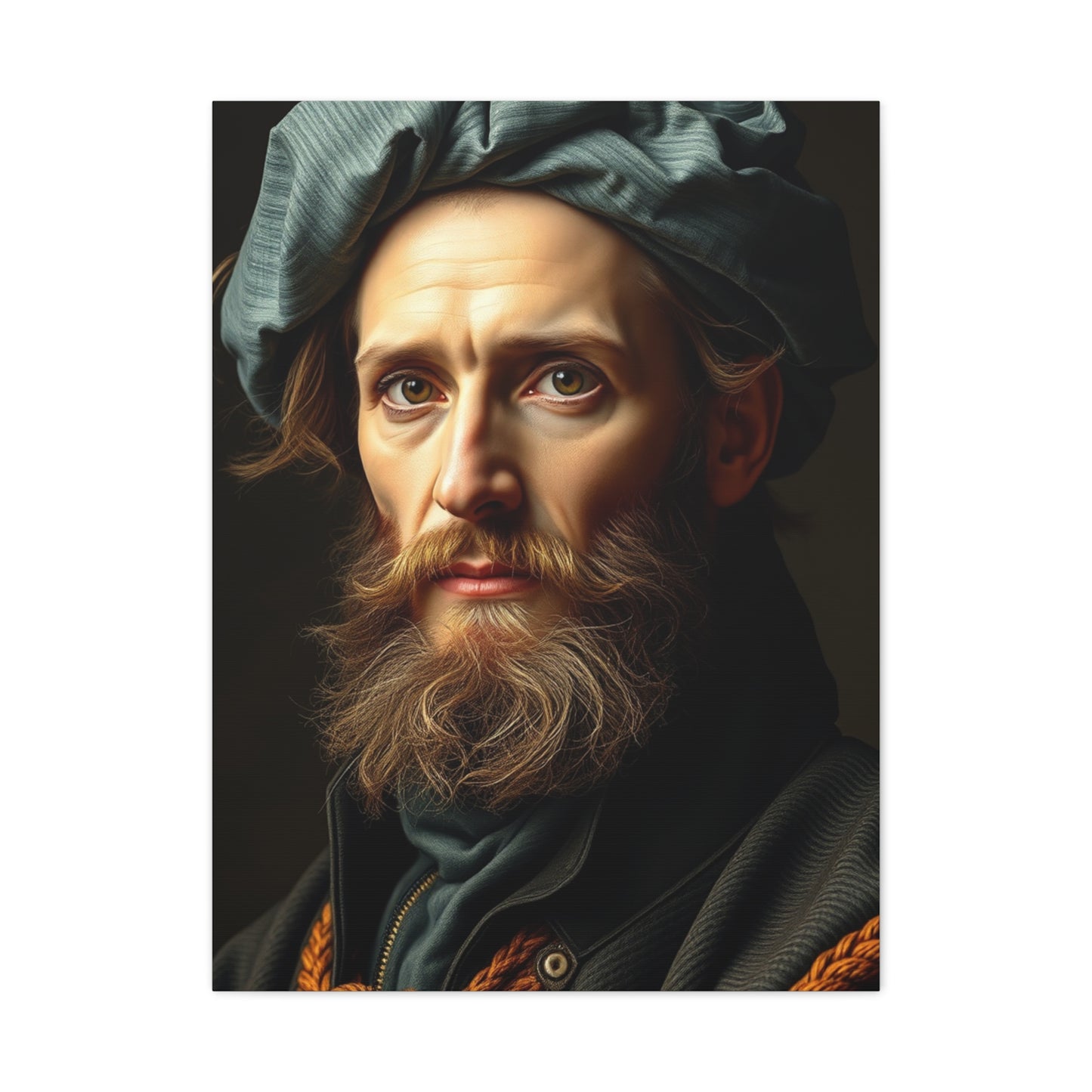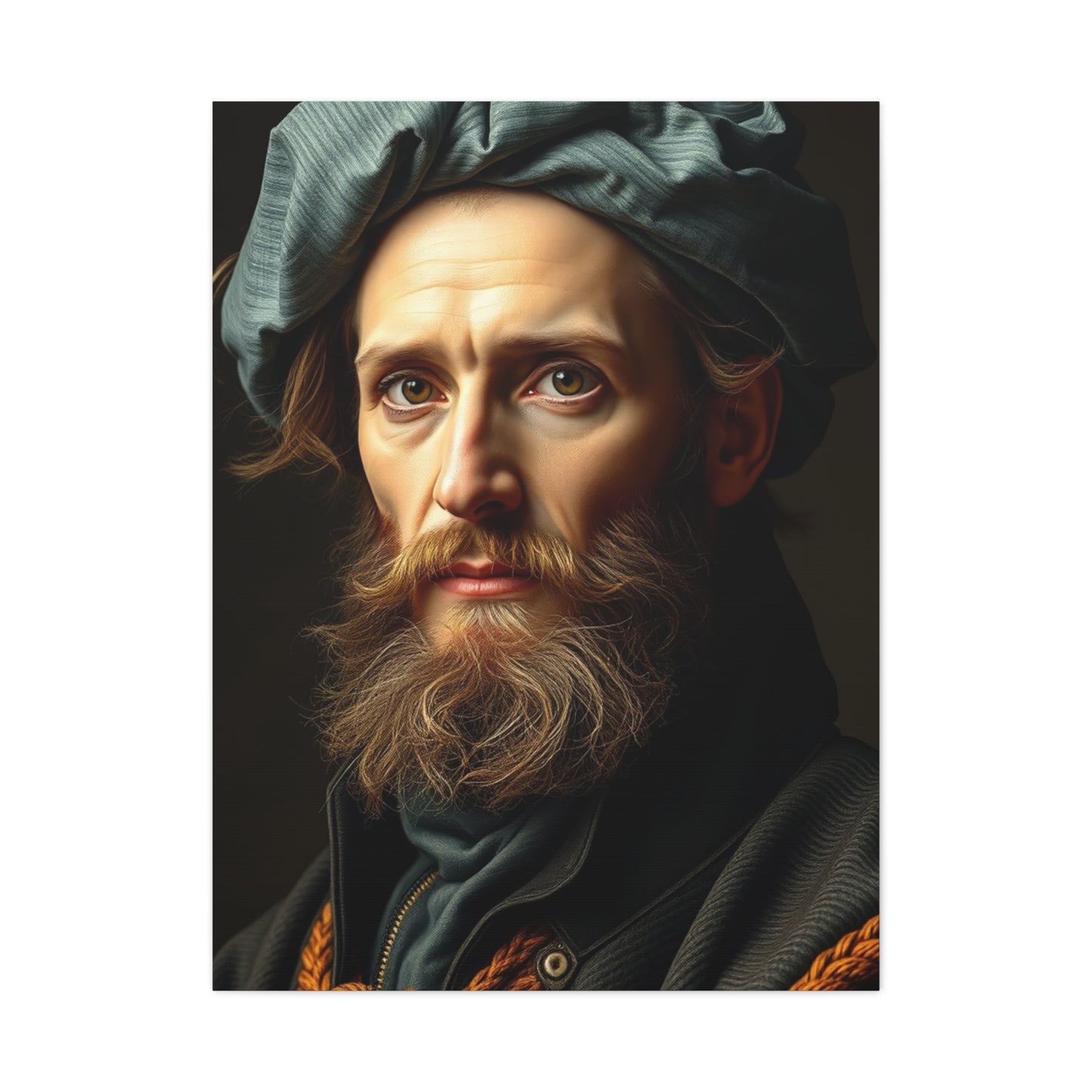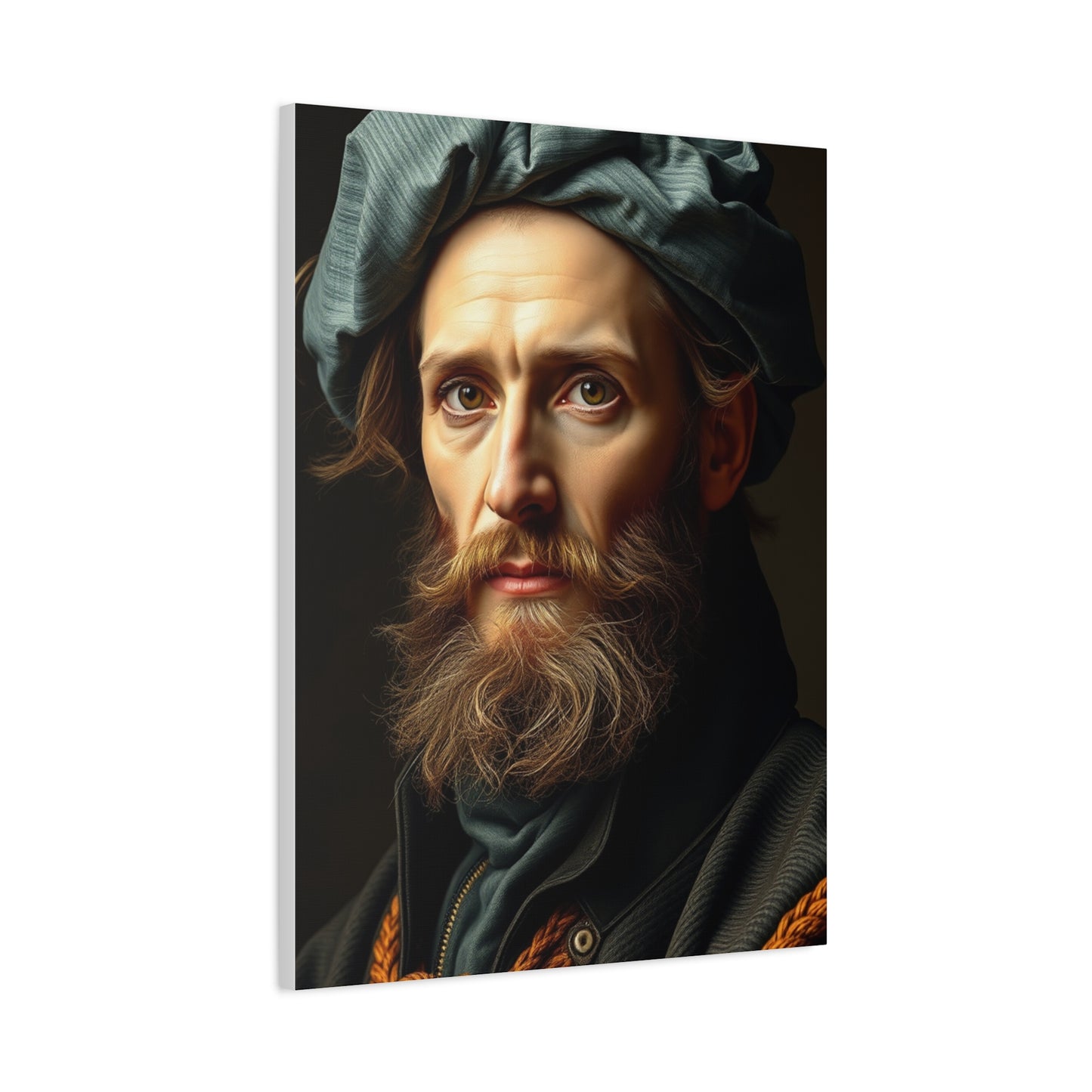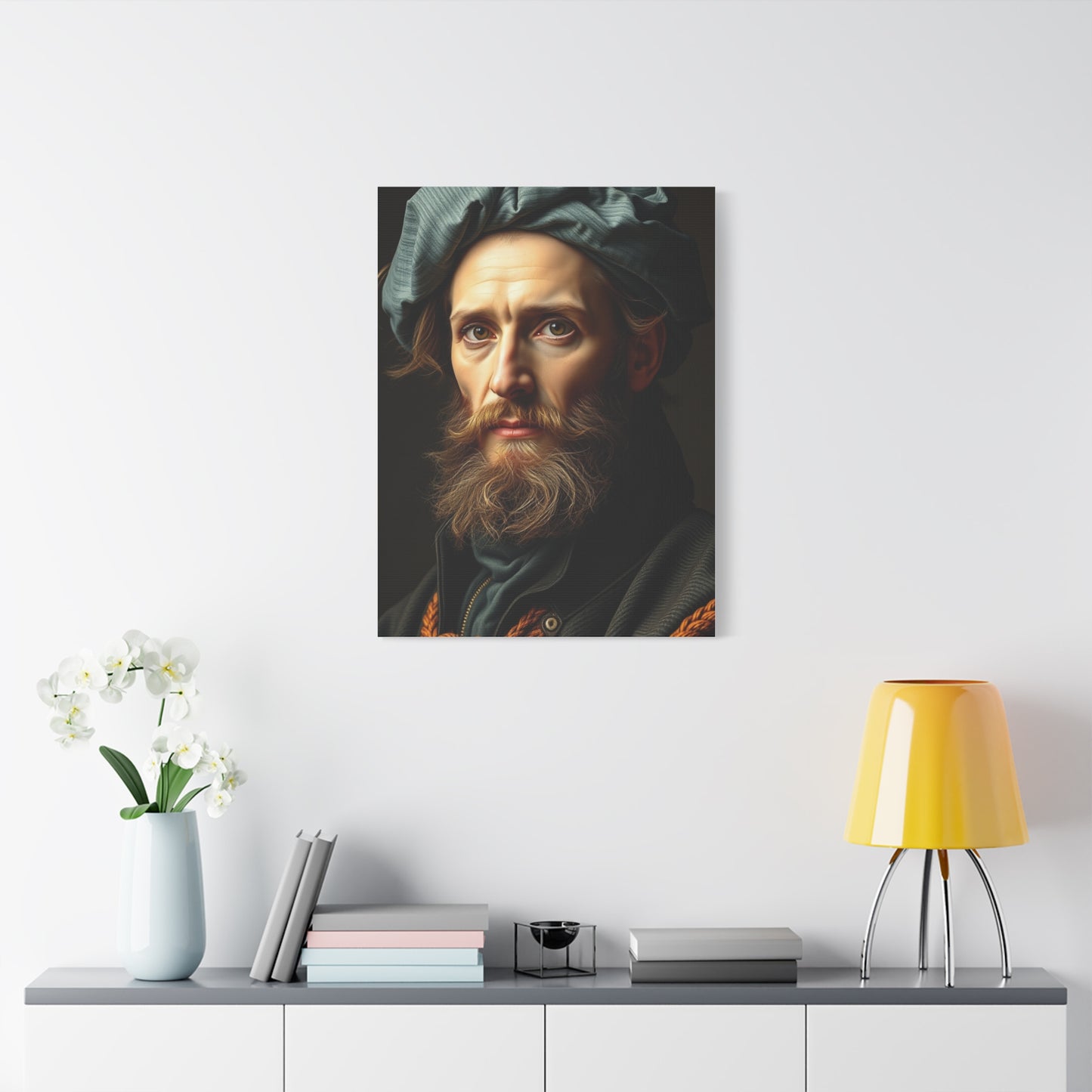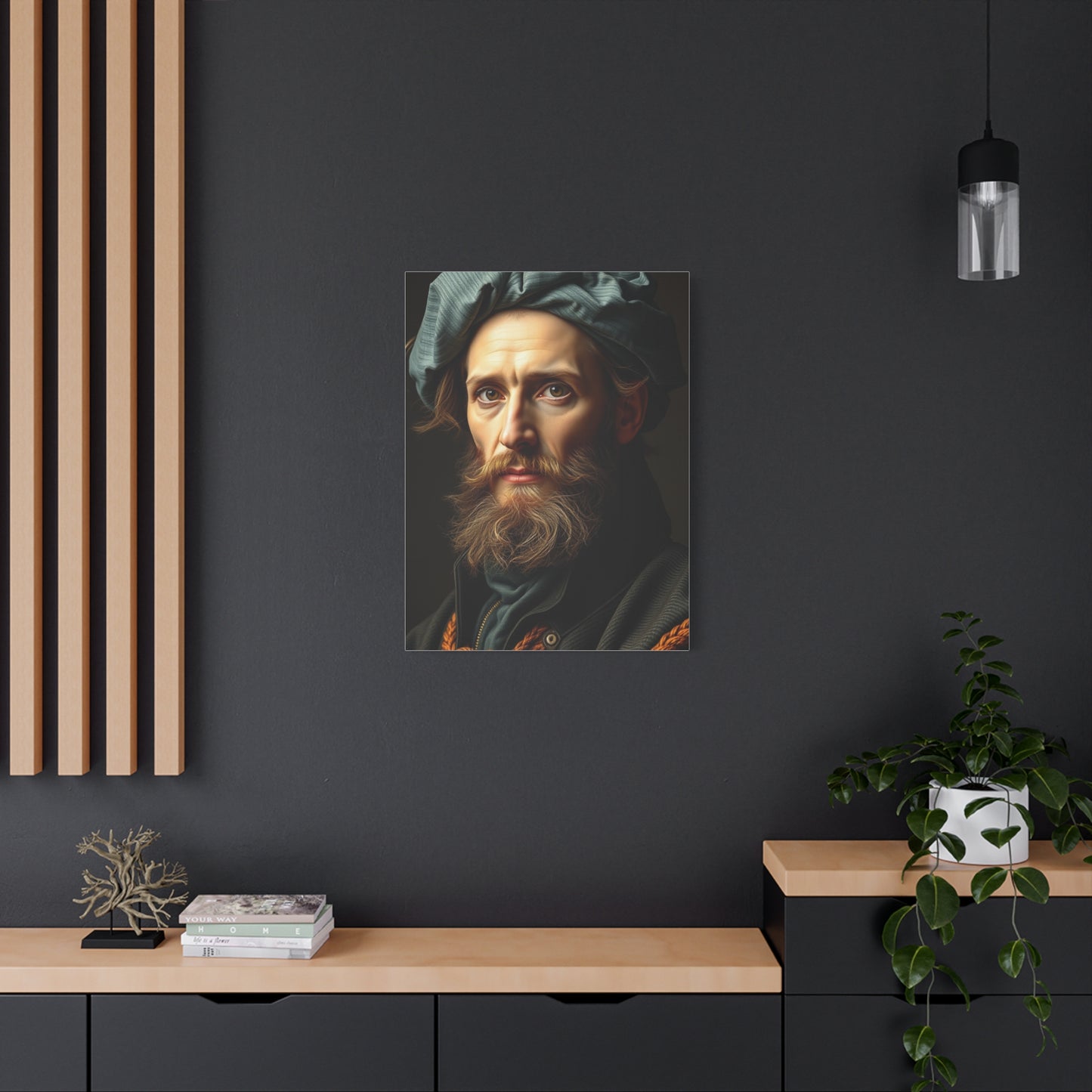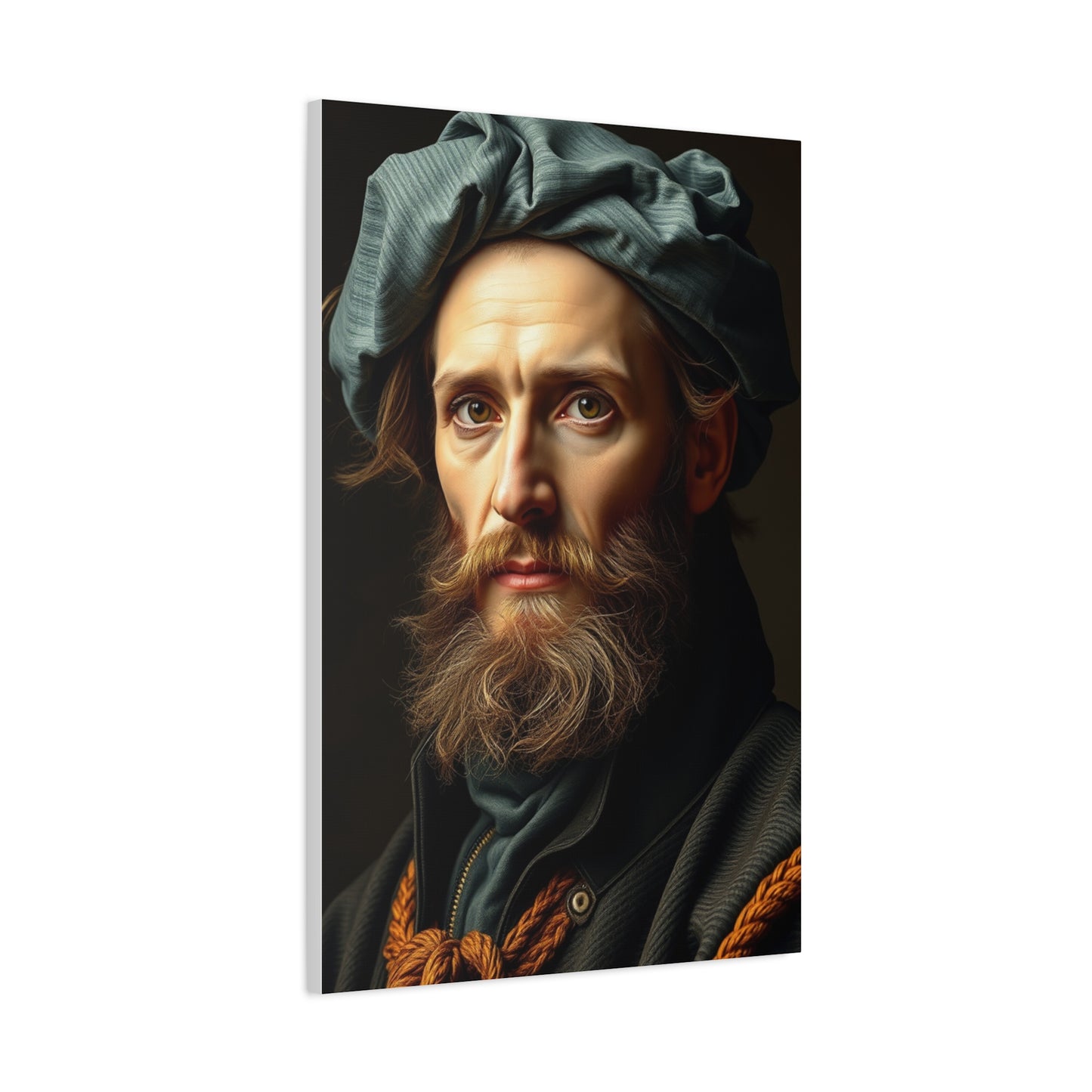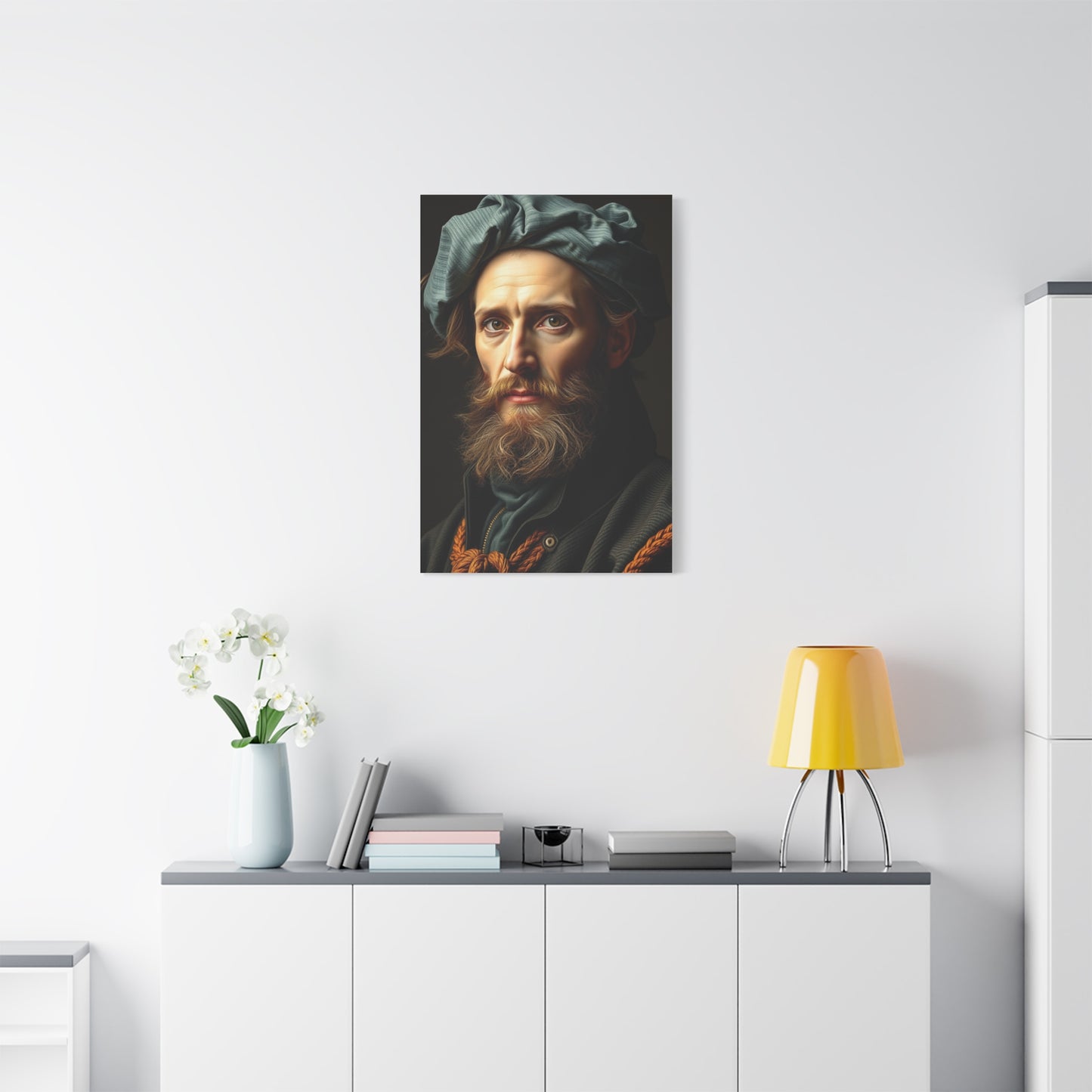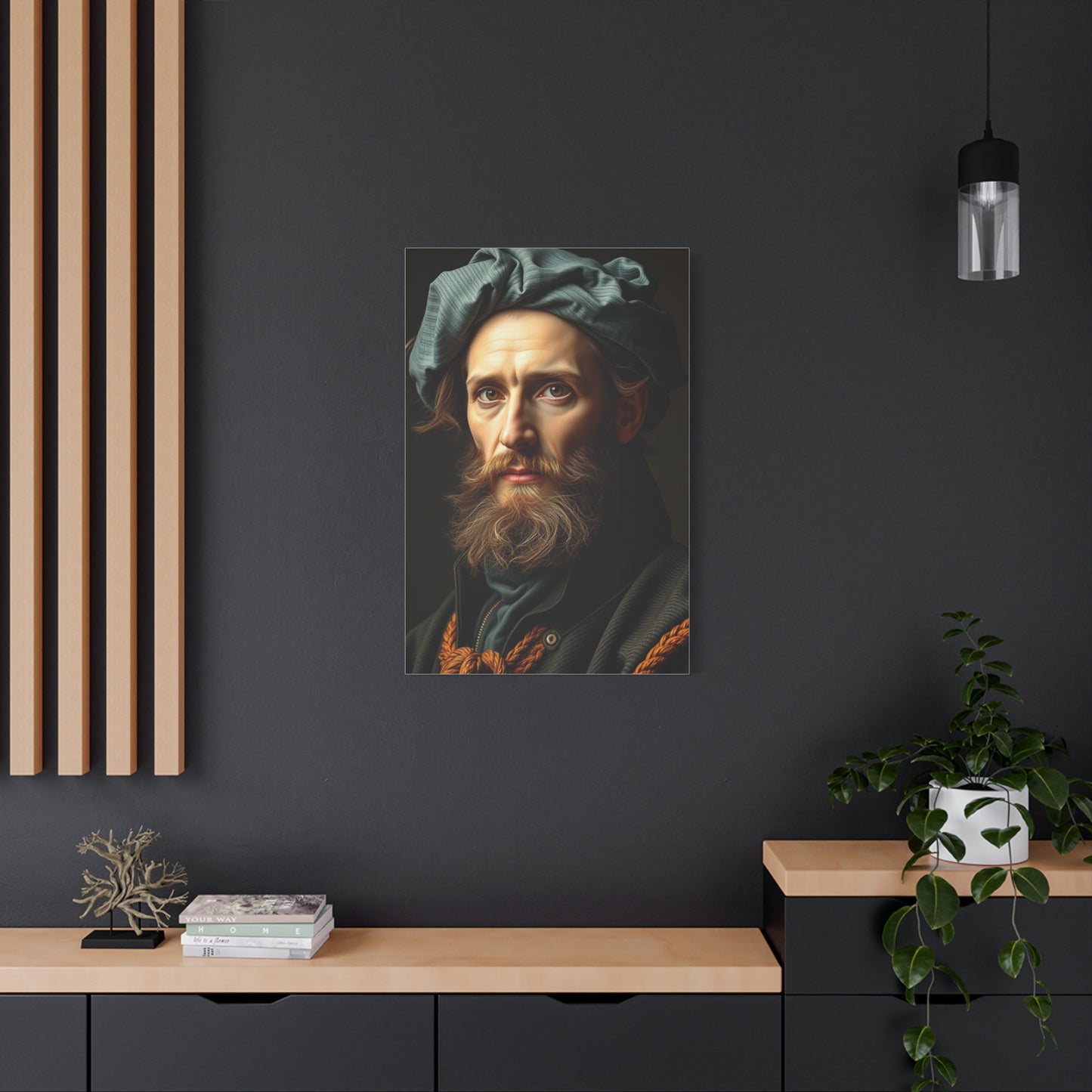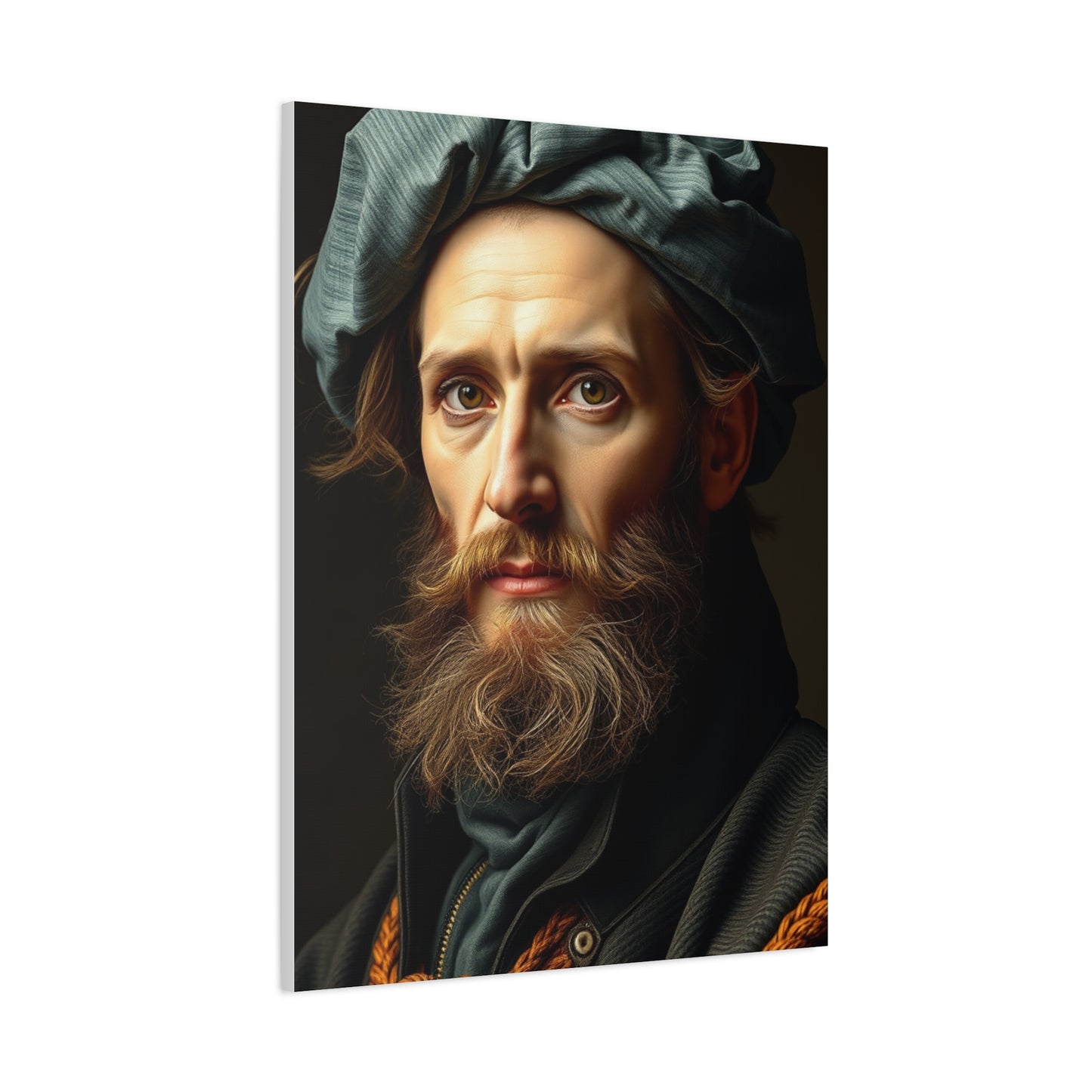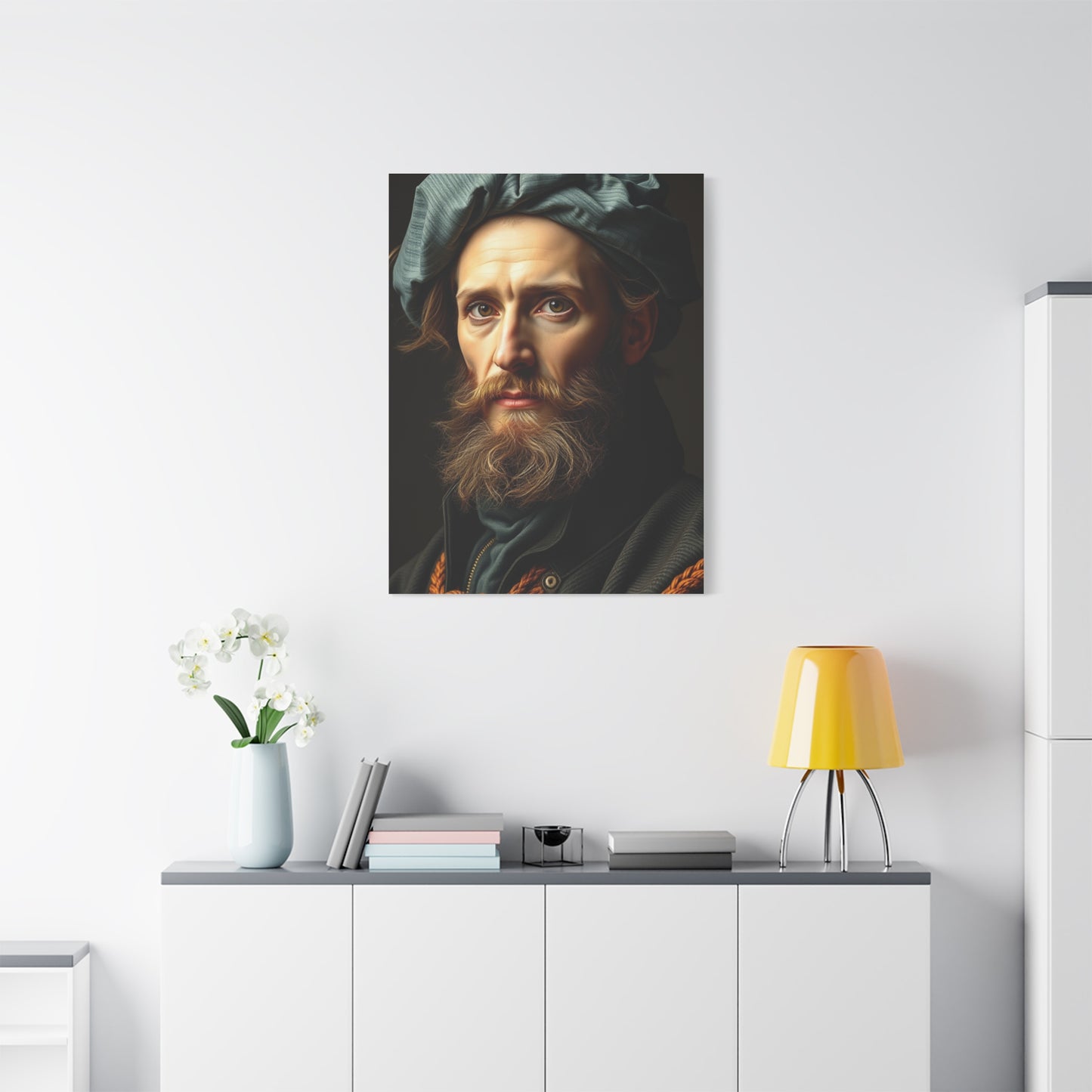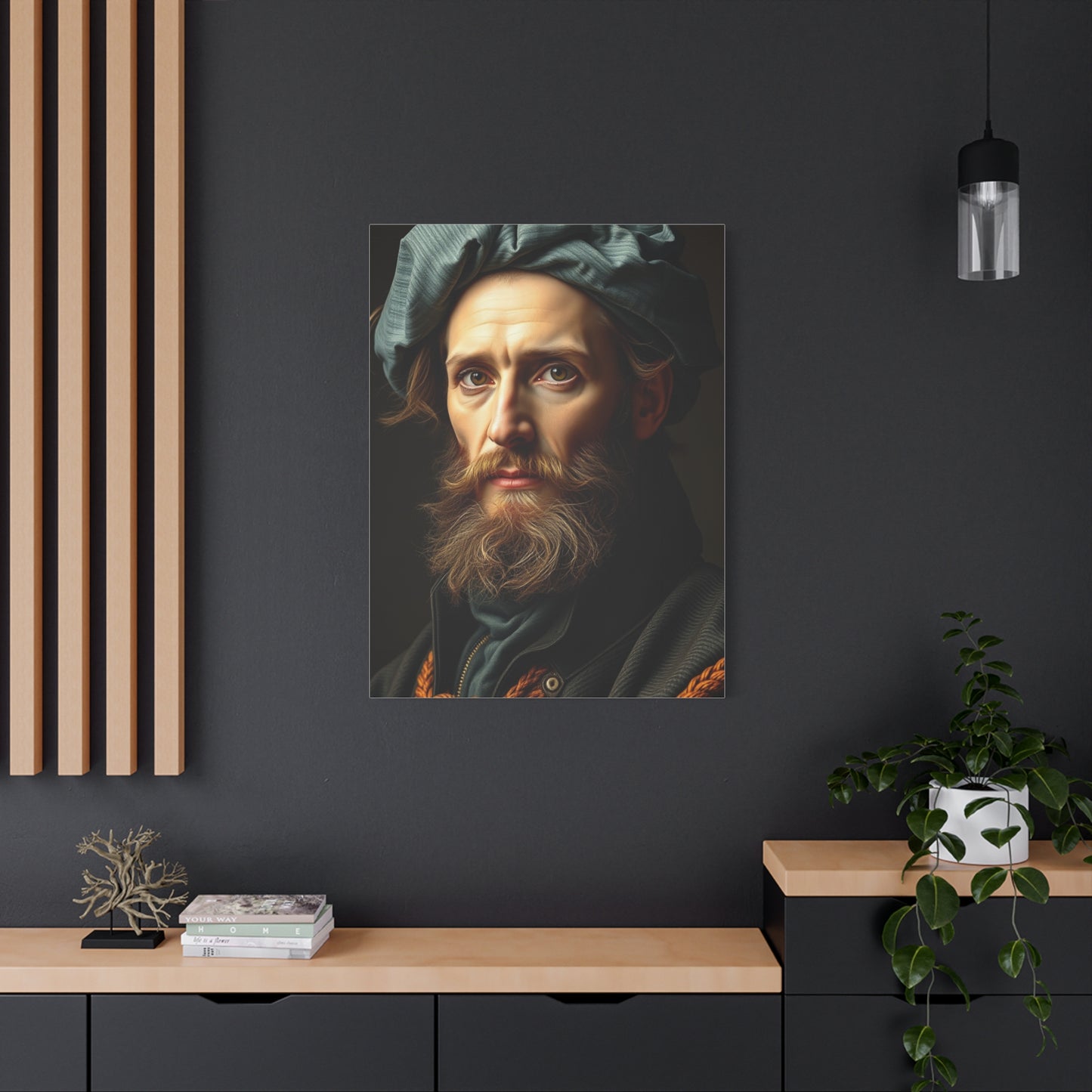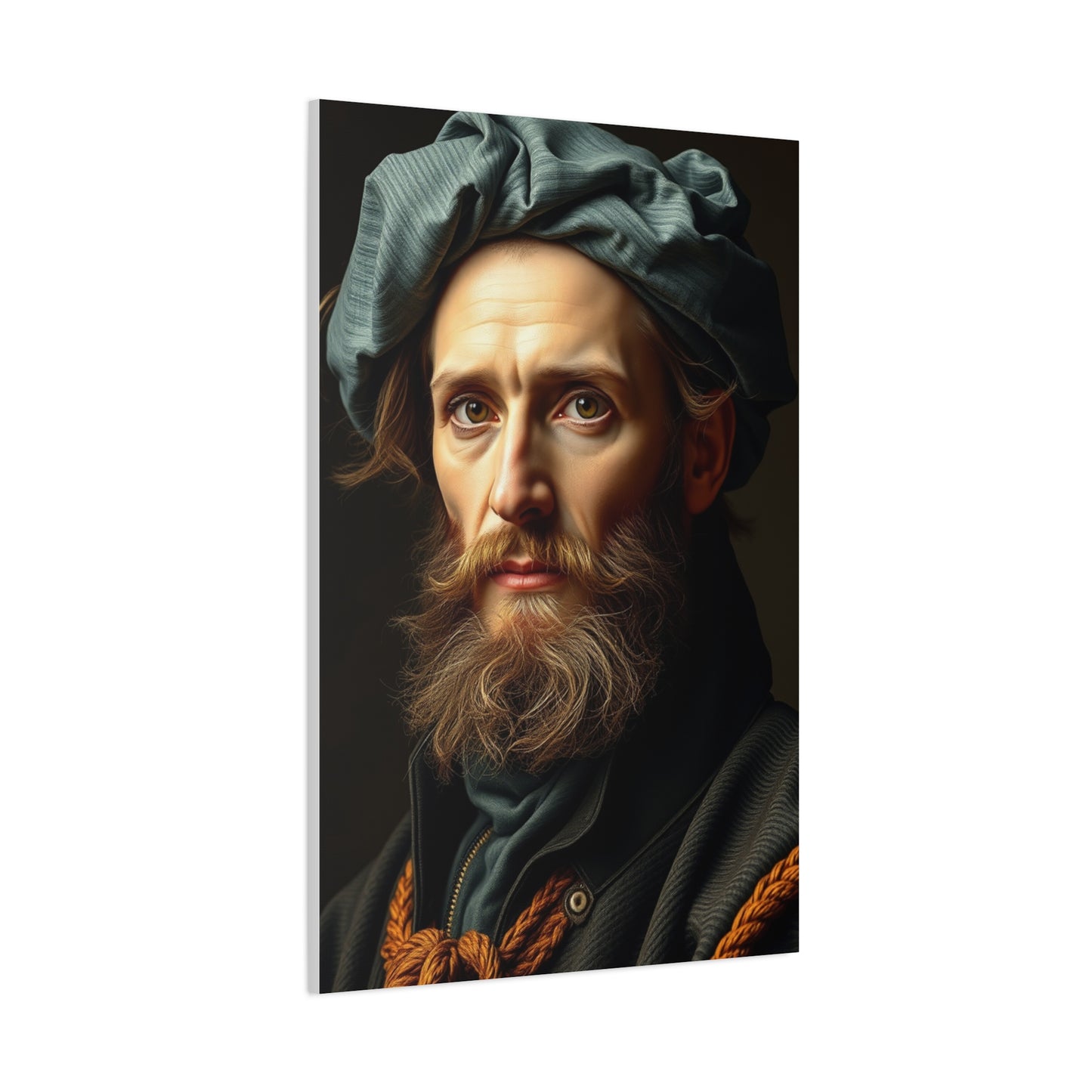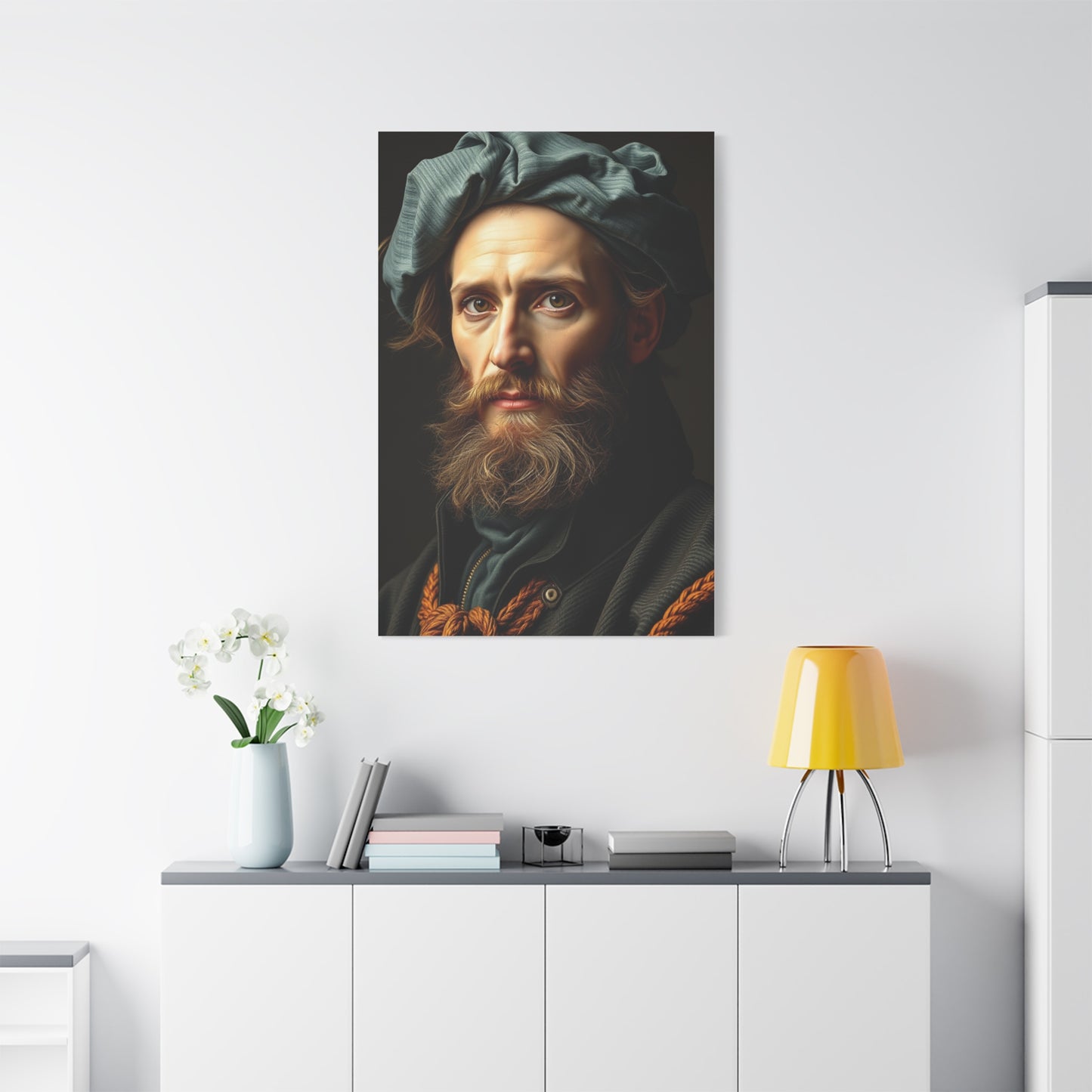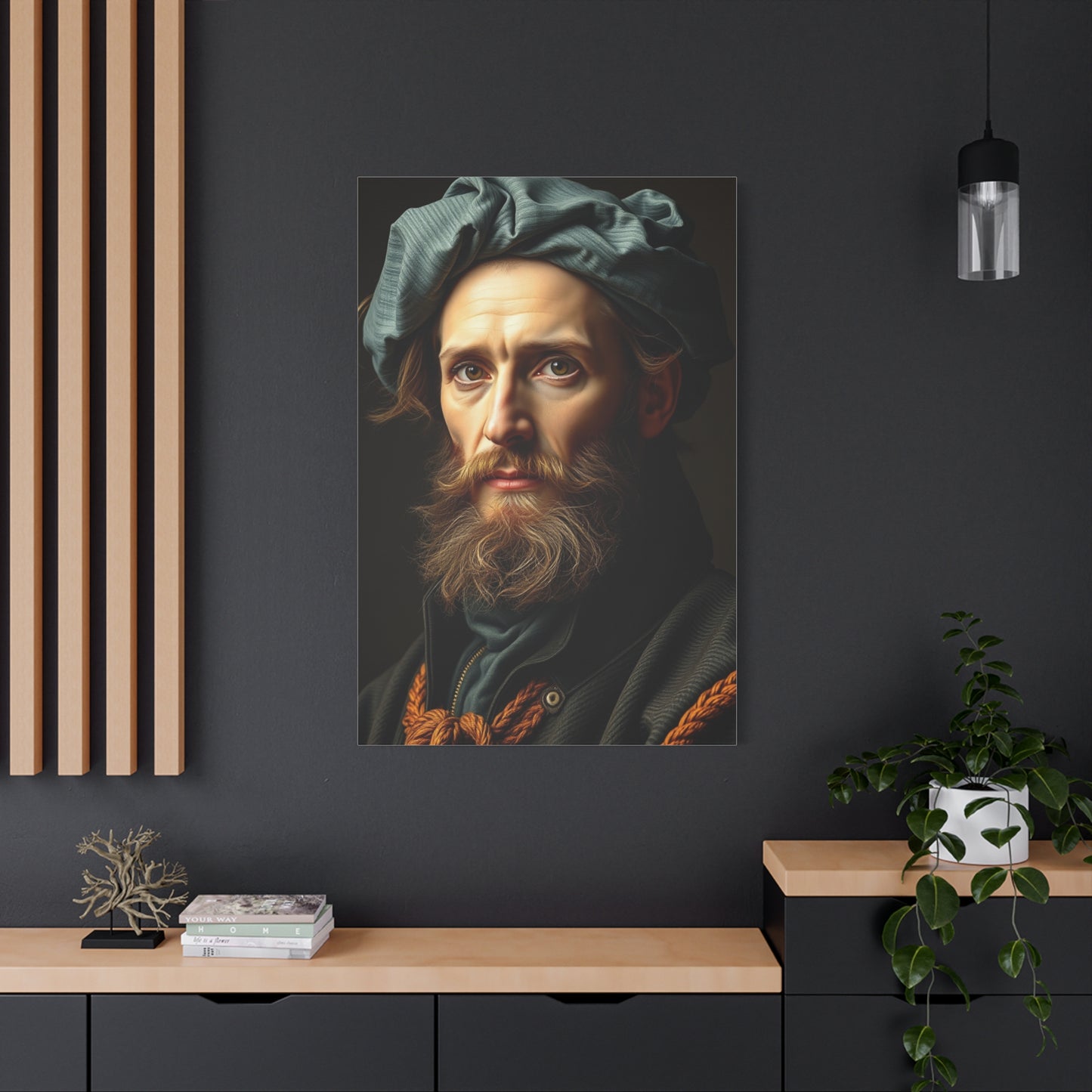A Deep Dive into Rijinian Masterpiece Canvas Art Collections: The Complete Guide
Rijinian masterpiece canvases represent a captivating fusion of cultural heritage and artistic innovation that has captured the attention of collectors and enthusiasts worldwide. These stunning visual creations carry the weight of centuries-old traditions while embracing contemporary sensibilities, making them a cherished addition to any collection. The allure of Rijinian canvas artwork lies not only in its aesthetic appeal but also in the profound stories and techniques that each piece embodies.
The journey into the realm of Rijinian artistry reveals a rich tapestry of creative expression that transcends mere decoration. Each canvas tells a story, weaving together elements of history, emotion, and technical mastery that have been refined through generations. As the global art market continues to evolve, Rijinian masterpieces have emerged as significant cultural artifacts that bridge the gap between traditional craftsmanship and modern artistic movements. Collectors and admirers find themselves drawn to the unique characteristics that distinguish these works from other artistic traditions, creating a devoted following that spans continents and cultures.
Premier Rijinian Masterpiece Canvases Worth Acquiring
When embarking on the journey of collecting Rijinian canvas masterpieces, certain works stand out as essential acquisitions that represent the pinnacle of this artistic tradition. The selection of premier pieces requires careful consideration of various factors including artistic merit, historical significance, and the reputation of the creator. Among the most sought-after collections are those that demonstrate the quintessential elements of Rijinian artistry while showcasing innovative approaches that push the boundaries of the medium.
The first category of highly collectible Rijinian canvases includes those that feature traditional motifs rendered with exceptional technical skill. These pieces often depict scenes from cultural narratives, incorporating symbolic elements that have been passed down through generations of artists. The mastery displayed in these works is evident in the intricate details, balanced compositions, and the harmonious use of color that creates a sense of depth and movement. Collectors prize these pieces not only for their visual appeal but also for their connection to the historical roots of Rijinian artistic expression.
Contemporary Rijinian masterpieces that reinterpret classical themes through a modern lens represent another highly desirable category. These works demonstrate how traditional techniques can be adapted to express current perspectives and concerns while maintaining the essential character that defines Rijinian art. The artists behind these pieces have studied the methods of their predecessors extensively, yet they bring fresh perspectives that resonate with today's audiences. Such canvases often command significant attention in galleries and auction houses, as they represent the living evolution of an artistic tradition.
Abstract interpretations within the Rijinian tradition have gained considerable popularity among collectors seeking pieces that push the boundaries of conventional representation. These works maintain connections to traditional color palettes and compositional principles while exploring new territories of expression. The tension between adherence to established methods and the pursuit of innovation creates dynamic pieces that challenge viewers while remaining rooted in cultural authenticity. Collectors who acquire these works often appreciate the dialogue they create between past and present.
Rijinian canvases that feature landscapes and natural scenes hold a special place in the hierarchy of collectible works. These pieces capture the essence of environments that have inspired Rijinian artists for centuries, rendered with a sensitivity to light, atmosphere, and the emotional resonance of particular locations. The technical challenges involved in creating convincing representations of natural phenomena make these works particularly impressive demonstrations of artistic skill. Many collectors build entire collections around landscape-focused Rijinian masterpieces, appreciating the variety and depth within this single genre.
Figurative works represent another cornerstone of collectible Rijinian canvas art, with portraits and human-centered compositions demonstrating the ability of artists to capture not just physical likeness but emotional and psychological depth. The tradition of portraiture within Rijinian art involves specific conventions regarding posture, expression, and the use of symbolic elements that convey information about the subject. Contemporary practitioners have expanded these conventions while maintaining the essential qualities that make Rijinian figurative work distinctive. Collectors of these pieces often focus on works that demonstrate particular skill in rendering human emotion and character.
Limited production runs and artist-signed editions constitute a special category of highly collectible Rijinian canvases. These pieces offer collectors the opportunity to acquire works that come with guarantees of authenticity and controlled availability. The value proposition of such editions lies not only in their scarcity but also in the direct connection they provide to the artist's vision and intention. Many serious collectors prioritize acquiring these limited works as the foundation of their collections, knowing that their value is likely to appreciate over time.
Collaborative works that bring together multiple Rijinian artists represent rare and fascinating additions to any collection. These pieces showcase how different artistic voices can harmonize while maintaining individual expression, creating canvases that are greater than the sum of their parts. The process of creating collaborative works often involves complex negotiations about composition, technique, and thematic direction, resulting in pieces that reflect multiple perspectives. Collectors who acquire these works gain not just a single masterpiece but a document of artistic dialogue and cooperation.
Historical Rijinian canvases that have survived from earlier periods command particular attention from collectors interested in the development of the tradition. These works provide insight into the techniques and materials used in previous eras, often displaying characteristics that differ from contemporary production methods. The patina of age adds an additional layer of interest to these pieces, as the natural processes of aging can create unexpected visual effects that enhance the original work. Collectors must exercise particular care when acquiring historical pieces, ensuring proper authentication and understanding the conservation needs of older canvases.
Rijinian masterpieces that incorporate innovative materials or techniques represent the cutting edge of the tradition, appealing to collectors who appreciate experimentation within established artistic frameworks. Some contemporary artists have begun incorporating mixed media elements, textural additions, or unconventional pigments while maintaining the essential aesthetic principles of Rijinian art. These experimental works challenge conventional definitions of what constitutes a Rijinian masterpiece, creating opportunities for dialogue and debate within the collecting community. Acquiring such pieces represents an investment in the future direction of the artistic tradition.
Optimal Methods for Presenting Rijinian Masterpiece Canvas Artwork
The proper exhibition of Rijinian canvas masterpieces requires thoughtful consideration of numerous factors that influence how the artwork is perceived and appreciated. The environment in which these pieces are displayed significantly impacts their visual effect and the emotional response they evoke in viewers. Creating an optimal presentation involves understanding the specific characteristics of Rijinian art and how various display strategies can enhance or diminish their impact. The goal is to create conditions that allow the artwork to communicate its full meaning and beauty while protecting it from potential damage.
Lighting represents perhaps the most critical element in displaying Rijinian canvas art effectively. These works often feature subtle color gradations and textural elements that require proper illumination to be fully appreciated. Natural light, while beautiful, presents challenges due to its variability and the potential for UV damage to pigments and canvas materials. Many experts recommend a combination of ambient lighting and focused spotlights that can be adjusted to highlight specific areas of a canvas without creating harsh shadows or glare. The color temperature of artificial lighting should be carefully selected to accurately represent the hues used by the artist, typically favoring neutral or slightly warm tones that complement the palette commonly found in Rijinian masterpieces.
The height at which canvases are hung significantly affects viewer engagement and the overall aesthetic impact of the presentation. A general principle suggests that the center of the artwork should align roughly with average eye level, typically between 57 and 60 inches from the floor. However, this guideline may need adjustment based on the specific dimensions of the canvas, the height of the ceiling, and the typical viewing distance. Larger Rijinian masterpieces may benefit from being positioned slightly lower to allow viewers to take in the entire composition comfortably, while smaller pieces might be elevated to draw attention and create intimate viewing experiences.
The surrounding environment plays a crucial role in how Rijinian canvas art is perceived and appreciated. The colors and textures of adjacent walls should be selected to complement rather than compete with the artwork. Neutral tones often provide the most versatile backdrop, allowing the colors within the canvas to stand out without distraction. However, some collectors choose to create more dramatic presentations by selecting wall colors that harmonize with dominant hues in the artwork, creating a cohesive visual environment that enhances the impact of the piece. The texture of the wall surface also merits consideration, as rough or highly reflective finishes can create visual interference.
Grouping multiple Rijinian canvases requires careful planning to create harmonious arrangements that allow each piece to maintain its individual impact while contributing to a larger visual statement. When creating groupings, consideration must be given to the relationships between pieces in terms of size, color palette, subject matter, and artistic style. Some collectors prefer symmetrical arrangements that create a sense of order and balance, while others embrace more organic configurations that add visual interest through intentional asymmetry. The spacing between individual canvases within a grouping should be consistent, typically ranging from two to six inches depending on the scale of the works and the available wall dimension.
The relationship between Rijinian canvas art and furniture placement significantly influences the overall effect of the presentation. Artwork should be positioned to create visual connections with key furniture pieces while maintaining appropriate clearances that prevent physical contact and allow for comfortable viewing. When hanging canvases above furniture such as sofas or tables, a distance of six to twelve inches between the furniture top and the bottom edge of the frame is generally recommended. This creates a visual link between the elements while providing sufficient breathing room for both the furniture and the artwork to maintain their distinct presence.
Creating dedicated gallery areas within residential or commercial settings allows for the focused appreciation of Rijinian masterpieces. These areas might be entire rooms devoted to art display or designated sections of larger multipurpose environments. The advantage of dedicated gallery areas lies in the ability to control all aspects of the viewing experience, from lighting to temperature to the absence of distracting elements. Such dedicated presentations communicate the significance of the artwork and create an atmosphere conducive to contemplation and appreciation. Even relatively small alcoves or hallway sections can be transformed into effective gallery areas with thoughtful planning and execution.
The use of pedestals, easels, or other display furniture can add dimension and flexibility to the presentation of Rijinian canvas art. While most canvases are designed for wall mounting, certain pieces may benefit from alternative display methods that allow for rotation, repositioning, or closer inspection. Easel displays can be particularly effective for showcasing individual masterpieces as focal points, creating a sense of importance and inviting viewers to engage more closely with the work. Mobile display solutions offer the additional benefit of flexibility, allowing collectors to experiment with different arrangements and respond to changing preferences or seasonal decorating themes.
Incorporating protective barriers such as stanchions or railings can be appropriate in high-traffic areas where Rijinian canvases might be vulnerable to accidental contact. While most residential settings do not require such measures, commercial or public installations benefit from the added security these elements provide. The challenge lies in implementing protective measures that do not detract from the viewing experience or create an overly institutional atmosphere. Subtle barriers made from materials that complement the overall aesthetic can provide necessary protection while maintaining an inviting environment.
The creation of viewing angles and sightlines requires attention to how people naturally move through and interact with environments. Rijinian masterpieces should be positioned where they can be viewed from multiple distances and perspectives, allowing for both detailed examination and appreciation of the overall composition. Consideration of traffic patterns helps ensure that artwork is visible from natural approach angles and that viewers have sufficient room to step back and take in the full impact of larger canvases. The most successful displays create a sense of discovery, with artwork revealing itself progressively as viewers move through the environment.
Documentation and labeling practices can enhance the viewing experience by providing context and information about Rijinian canvas masterpieces. Small plaques or printed materials that include details about the artist, the creation date, the medium, and thematic content help viewers engage more deeply with the work. However, these informational elements must be designed and positioned carefully to avoid distracting from the visual impact of the artwork itself. Many collectors strike a balance by providing detailed information in separate catalogs or digital resources while maintaining minimal labeling in the immediate vicinity of the displayed pieces.
Artistic Methodologies Employed in Rijinian Masterpieces
The creation of Rijinian masterpiece canvases involves sophisticated artistic methodologies that have been refined over generations of practice and innovation. These techniques represent a distinctive approach to visual expression that sets Rijinian art apart from other artistic traditions. Understanding the methods employed by Rijinian artists provides deeper appreciation for the skill and knowledge required to produce these remarkable works. The technical aspects of Rijinian art are inseparable from its aesthetic and cultural dimensions, forming an integrated approach to creative expression.
The preparatory phase of creating a Rijinian canvas begins with careful selection and treatment of materials. The canvas itself must be of appropriate weight and weave to support the specific techniques that will be applied. Traditional approaches involve stretching the canvas over wooden frames using methods that ensure even tension across the entire surface. The surface is then prepared with sizing and ground layers that create an appropriate substrate for paint application. These preparatory steps, while invisible in the finished work, profoundly influence the final appearance and longevity of the piece. Contemporary Rijinian artists may use modern materials that offer improved stability and archival properties while maintaining compatibility with traditional techniques.
The development of compositional structure in Rijinian masterpieces follows principles that balance careful planning with spontaneous expression. Many artists begin with preliminary sketches that explore various arrangements of elements, testing different approaches to balance, emphasis, and visual flow. These sketches serve as maps for the subsequent painting process, though the final canvas often departs from the original plan as the work evolves. The compositional principles underlying Rijinian art emphasize harmony and balance while accommodating dynamic elements that create visual interest and guide the viewer's eye through the piece.
Color mixing and palette development represent crucial technical skills that distinguish accomplished Rijinian artists from novices. The traditional color palette associated with Rijinian art includes specific hues and combinations that have symbolic and aesthetic significance. Artists must understand not only how to create these colors through pigment mixing but also how they interact when placed adjacent to one another on the canvas. The layering of transparent and opaque colors creates depth and luminosity, with earlier layers influencing the appearance of subsequent applications. Master artists develop intuitive understanding of color relationships through years of experimentation and practice.
Brushwork techniques in Rijinian art encompass a wide range of approaches from fine, controlled strokes to bold, gestural marks. The selection of brushes and the manner of their application creates distinctive textural effects that contribute to the overall character of the piece. Traditional Rijinian brushwork often involves the use of natural bristle brushes that create particular mark-making qualities. The pressure, angle, and speed of brush application all influence the resulting mark, and skilled artists manipulate these variables to achieve desired effects. Some techniques involve the layering of many small strokes to build up forms gradually, while others rely on confident, decisive marks that capture energy and movement.
The application of paint in layers is fundamental to achieving the depth and complexity characteristic of Rijinian masterpieces. The underpainting establishes the basic tonal structure and compositional framework, often using a limited palette to map out light and shadow relationships. Subsequent layers build up color intensity and refine forms, with each layer interacting with those beneath to create rich, complex surfaces. The timing of layer application is crucial, as working into wet or dry paint produces different effects. Traditional Rijinian techniques often involve allowing layers to dry completely between applications, creating crisp separations, while some contemporary approaches embrace wet-into-wet techniques that produce softer transitions.
Glazing techniques involve applying thin, transparent layers of color over dried paint layers, creating luminous effects that cannot be achieved through direct color mixing. Rijinian artists have long employed glazing to achieve particular color qualities and to unify different areas of a composition. The glazing medium must be carefully formulated to provide appropriate working properties and to ensure compatibility with underlying paint layers. Multiple glazes can be built up to create extraordinary depth and richness, with light penetrating through the translucent layers and reflecting back to the viewer. This technique requires patience and skill, as the effects of each glaze layer may not be immediately apparent.
Textural effects in Rijinian canvas art extend beyond brushwork to include various methods of manipulating paint and adding dimensional elements. Some artists incorporate impasto techniques, applying paint thickly to create actual relief on the canvas surface. The buildup of paint can be achieved through direct application with brushes or palette knives, or through additive techniques that mix paint with textural mediums. These raised surfaces catch and reflect light differently than flat areas, adding another dimension to the visual experience. Other textural approaches might involve scratching into wet paint, pressing materials into the surface, or using specialized tools to create particular effects.
The integration of drawing elements into Rijinian canvas paintings reflects the close relationship between different artistic disciplines within the tradition. Some works feature visible underdrawing or incorporate linear elements that complement the painted passages. The drawing might be executed in charcoal, graphite, or paint applied with fine brushes, and may serve structural, decorative, or expressive functions. The decision about how much drawing to incorporate and whether to allow it to remain visible involves aesthetic choices that influence the overall character of the piece. Contemporary Rijinian artists sometimes emphasize drawing elements more prominently, blurring the boundaries between painting and drawing.
The finishing and varnishing stages of canvas creation protect the artwork and influence its final appearance. Varnishes serve multiple functions including unifying the surface sheen, enhancing color saturation, and providing a barrier against environmental contaminants. The type of varnish selected affects whether the finished piece has a matte, satin, or glossy appearance, each creating different viewing experiences. Application techniques must ensure even coverage without creating drips or bubbles. Some contemporary artists choose to leave works unvarnished, preferring the raw quality of the paint surface, while others experiment with specialized varnishes that create particular optical effects.
The documentation of technical processes has become increasingly important in contemporary Rijinian art practice. Many artists maintain detailed records of their materials, procedures, and the reasoning behind technical choices. This documentation serves multiple purposes including facilitating conservation efforts, supporting authentication processes, and providing educational resources. Some artists share technical information through workshops, publications, or digital media, contributing to the ongoing evolution of Rijinian artistic methodologies. The transparency about technique reflects a broader trend toward demystifying artistic processes while maintaining respect for the skill and knowledge required to execute them successfully.
Prominent Rijinian Creative Masters You Must Recognize
The landscape of Rijinian artistic achievement is populated by remarkable individuals whose contributions have shaped the tradition and inspired countless practitioners. These artists represent different eras, approaches, and perspectives, yet all share a commitment to excellence and innovation within the framework of Rijinian artistic principles. Understanding the work and influence of key figures provides essential context for appreciating the full scope and depth of this artistic tradition. The following profiles highlight some of the most significant Rijinian masters whose legacies continue to resonate in contemporary practice.
The historical foundations of Rijinian canvas art were established by pioneering figures who developed the core techniques and aesthetic principles that define the tradition. These early masters worked during periods when artistic materials and methods were more limited, yet they achieved remarkable results through ingenuity and dedication. Their works, many of which have survived centuries, demonstrate the durability of properly executed Rijinian techniques and the timeless appeal of well-conceived compositions. The influence of these founding figures extends beyond their specific works to encompass the teaching lineages they established and the aesthetic standards they set for subsequent generations.
Among the transitional figures who bridged traditional approaches and modern sensibilities, several artists stand out for their innovative adaptations of Rijinian principles. These practitioners respected the technical heritage of the tradition while recognizing the need to address contemporary concerns and sensibilities. Their works often feature classical compositional structures and color palettes combined with subject matter and treatments that reflect changing social conditions and artistic conversations. The tension between tradition and innovation in their work created dynamic pieces that satisfied both conservatives who valued continuity and progressives who sought evolution.
Contemporary masters working within the Rijinian tradition have achieved international recognition while maintaining strong connections to cultural roots. These artists navigate the complex terrain of global art markets while preserving the distinctive characteristics that make their work identifiably Rijinian. Their success demonstrates that adherence to traditional principles need not limit contemporary relevance or market appeal. Many of these figures have achieved the difficult balance of maintaining artistic integrity while building sustainable professional practices, serving as models for emerging artists.
Female artists have made increasingly significant contributions to Rijinian canvas art, though their historical involvement has sometimes been underrecognized. Contemporary scholarship has brought greater attention to women practitioners who maintained active careers despite social barriers that limited opportunities. Their works often brought distinctive perspectives to traditional subjects and explored themes that reflected women's experiences and concerns. The growing recognition of female Rijinian artists has enriched understanding of the tradition's development and has inspired a new generation of women practitioners who build on this legacy.
Artists who specialize in particular subjects or techniques within the broader Rijinian tradition have developed devoted followings among collectors and enthusiasts. Some have become known for landscape works that capture specific regions or environmental conditions with exceptional sensitivity and technical skill. Others focus on figurative work, developing approaches to portraiture or narrative compositions that define subgenres within Rijinian art. The specialization allows these artists to develop extraordinary depth of knowledge and capability within their chosen focus, producing works that set standards of excellence in particular categories.
Collaborative artistic groups and schools have played significant roles in sustaining and developing Rijinian canvas traditions. These organizations provide structures for artistic education, mutual support, and collective promotion of the tradition. The dynamics within such groups can be complex, balancing individual artistic expression with shared principles and collective identity. Some of the most vibrant periods in Rijinian art history have been associated with active schools where artists learned from one another, challenged each other's assumptions, and collectively pushed the boundaries of what was possible within the tradition.
Artists who have successfully transitioned between different media and disciplines while maintaining Rijinian sensibilities demonstrate the flexibility and relevance of the tradition's core principles. Some painters have expanded into sculpture, installation, or digital media, translating Rijinian aesthetic concerns into new forms. Others have moved between fine art and applied design contexts, bringing Rijinian visual language to functional objects and architectural elements. These cross-disciplinary explorations enrich the tradition by testing its principles in new contexts and revealing their broader applicability.
Younger emerging artists represent the future of Rijinian canvas art, bringing fresh perspectives and techniques while grappling with questions of tradition, identity, and contemporary relevance. Many younger practitioners have formal art education that exposed them to diverse influences and methodologies, which they synthesize with Rijinian training. Their works often reflect awareness of global artistic conversations while maintaining distinctively Rijinian characteristics. The challenge for emerging artists lies in establishing individual voices that honor the tradition while contributing something genuinely new.
Artists who work primarily for commission face different challenges and opportunities than those who create for gallery exhibition. Commission work requires negotiating between artistic vision and client preferences, developing works that satisfy specific decorative or thematic requirements while maintaining artistic integrity. Some Rijinian masters have excelled in this context, developing approaches that accommodate client input while preserving the essential qualities of their artistic practice. The best commission works achieve synthesis between client vision and artistic expertise, resulting in pieces that fulfill functional requirements while standing as significant artistic achievements.
Self-taught artists who work within Rijinian traditions bring unique perspectives shaped by unconventional learning paths. Without formal training in established methods, these practitioners often develop idiosyncratic techniques and approaches that can lead to fresh innovations. While lacking some technical refinements that formal education provides, self-taught artists sometimes achieve an authenticity and directness that trained artists struggle to maintain. The Rijinian tradition has generally been inclusive of diverse learning paths, valuing demonstrated capability over credentials, which has allowed talented self-taught artists to gain recognition and influence.
Rijinian Masterpiece Canvas Artwork: Merging Heritage with Contemporary Expression
The defining characteristic of Rijinian masterpiece canvases lies in their remarkable ability to honor traditional artistic values while embracing contemporary innovation and relevance. This synthesis represents more than mere stylistic combination; it reflects a philosophical commitment to continuity and evolution as complementary rather than opposing forces. The most successful Rijinian works achieve a balance that allows viewers familiar with the tradition to recognize its influence while offering fresh perspectives that engage contemporary sensibilities. This dynamic tension between past and present creates artwork that exists simultaneously in multiple temporal contexts.
The preservation of traditional techniques within contemporary Rijinian practice manifests in continued use of time-tested methods for canvas preparation, paint application, and compositional development. Artists who maintain these connections invest significant effort in learning procedures that might seem inefficient by modern standards. The rationale for this preservation extends beyond nostalgia to encompass practical understanding that traditional methods produce distinctive qualities difficult to replicate through alternative means. The texture of hand-ground pigments, the luminosity of traditionally formulated glazes, and the particular handling characteristics of natural bristle brushes all contribute to visual effects that define Rijinian aesthetic identity.
Contemporary innovations in Rijinian canvas art often involve the adaptation of new materials and tools to traditional purposes rather than wholesale abandonment of established approaches. Modern acrylic mediums might be formulated to approximate the working properties of traditional glazing materials while offering improved stability and archival properties. Digital tools can assist in compositional planning and color testing without replacing the fundamental act of painting. This selective incorporation of contemporary resources demonstrates pragmatic flexibility within a framework of aesthetic conservatism, allowing artists to benefit from technological advances while maintaining essential traditional characteristics.
The subject matter explored in contemporary Rijinian masterpieces reflects evolving concerns and experiences while maintaining connections to traditional themes. Classical subjects such as landscapes, portraits, and narrative scenes continue to appear, but often with treatments that address current perspectives and issues. Environmental concerns might inform landscape works, social commentary might inflect figurative pieces, and abstract explorations might investigate psychological or philosophical questions. The expansion of acceptable subject matter has broadened the expressive range of Rijinian art without diluting its formal distinctive characteristics.
The color palettes employed in contemporary Rijinian works demonstrate both continuity and evolution relative to historical practice. Traditional color combinations that carry symbolic meanings and aesthetic associations continue to appear, maintaining visual connections to canonical works. However, contemporary artists often expand these palettes with additional hues or explore unconventional combinations that create fresh visual experiences. The tension between familiar and novel color relationships creates dynamic works that reference tradition while asserting contemporary identity. The most successful palette innovations feel like natural extensions of traditional approaches rather than arbitrary departures.
Compositional principles in Rijinian canvas art have proven remarkably adaptable to contemporary concerns while maintaining essential structural logic. The fundamental emphasis on balance, harmony, and purposeful arrangement of elements continues to guide compositional decisions. However, contemporary works might incorporate asymmetrical balance, unexpected cropping, or fragmented structures that would have been unconventional in historical practice. These innovations typically work within rather than against traditional principles, finding new possibilities within established frameworks. The result is compositional diversity that expands the expressive range of Rijinian art while remaining recognizably part of the tradition.
The scale of contemporary Rijinian canvases has expanded dramatically compared to historical norms, with some artists creating monumental works that dominate architectural environments. This shift reflects changing exhibition contexts, different market demands, and contemporary aesthetic preferences for bold, immersive experiences. Large-scale works present technical challenges in terms of surface preparation, paint application, and structural support, requiring adaptation of traditional methods to new scales. The most successful large canvases maintain the attention to detail and surface quality characteristic of the tradition while leveraging their scale to create powerful visual impact.
The integration of mixed media elements into otherwise traditional Rijinian canvases represents a controversial innovation that tests the boundaries of the tradition. Some artists incorporate collage elements, three-dimensional additions, or unconventional materials while maintaining overall fidelity to Rijinian aesthetic principles. These hybrid works raise questions about what constitutes essential versus peripheral characteristics of the tradition. While purists might reject such innovations as compromising traditional integrity, others view them as natural evolution that keeps the tradition vital and relevant. The debate reflects broader questions about authenticity, innovation, and the nature of artistic traditions.
The influence of digital technology on Rijinian canvas creation extends beyond practical tools to encompass new possibilities for documentation, reproduction, and distribution. High-resolution photography allows detailed documentation that supports authentication, conservation, and scholarly study. Digital reproduction technologies enable the creation of high-quality prints that make Rijinian imagery accessible to broader audiences. Social media platforms provide new channels for artists to build followings and market their work. These technological integrations have transformed the practical context of Rijinian art creation and distribution without necessarily altering the fundamental nature of the artwork itself.
The globalization of art markets has created both opportunities and challenges for Rijinian canvas artists. Access to international audiences provides expanded market opportunities and cross-cultural dialogue that can enrich artistic practice. However, globalization also brings pressure to conform to international aesthetic standards that might conflict with traditional principles. Artists must navigate between maintaining distinctive cultural identity and achieving legibility within global art contexts. The most successful international careers maintain clear Rijinian identity while demonstrating awareness of and engagement with broader artistic conversations.
Educational approaches to Rijinian artistic training reflect tensions between traditional apprenticeship models and contemporary institutional structures. Historical training often involved long-term mentorship relationships where students learned through direct observation and practice under master artists. Contemporary art education typically occurs in academic institutions with structured curricula, diverse faculty, and exposure to multiple artistic traditions. Some training programs successfully synthesize these approaches, combining technical instruction in Rijinian methods with broader artistic education. The evolution of training models influences what skills and knowledge are transmitted to new generations of artists.
Enhancing Your Residence with Rijinian Artwork
The incorporation of Rijinian canvas masterpieces into residential environments creates opportunities to enhance both aesthetic appeal and emotional atmosphere. These artworks function not merely as decorative elements but as meaningful additions that reflect personal values, cultural connections, and aesthetic sensibilities. The process of selecting and positioning Rijinian pieces within home settings requires consideration of numerous factors including existing architectural features, furniture arrangements, color schemes, and the desired mood for each environment. Successfully integrated artwork becomes an integral part of the home's character rather than an afterthought.
The living room or main gathering area presents prime opportunities for displaying significant Rijinian canvas pieces. This central location typically receives the most visitor traffic and serves as the primary representation of the household's aesthetic identity. Large-scale works can serve as focal points that anchor the room's visual design, with furniture and accessories arranged in relationship to the artwork. The subject matter and mood of pieces selected for these prominent locations should align with the desired atmosphere, whether that involves creating a sense of tranquility, energy, sophistication, or warmth. Multiple smaller works can be arranged in groupings that create visual interest and allow for more complex narratives.
Private areas such as bedrooms and personal studies offer opportunities to display Rijinian canvas art selected for personal rather than public impact. The artwork chosen for these intimate environments might reflect individual interests, memories, or emotional needs not necessarily shared with casual visitors. The more personal nature of these selections allows for exploration of subjects or styles that might not work in more public areas. The viewing of this artwork during quiet moments can provide contemplation, inspiration, or comfort, fulfilling functions beyond the aesthetic. The scale and intensity of works in private areas might be more restrained to maintain the peaceful atmosphere typically desired in these environments.
Dining areas benefit from Rijinian canvas selections that complement the social and sensory experiences associated with meals. Works featuring food subjects, botanical themes, or convivial scenes can reinforce the dining experience, though such literal connections are not necessary. The color palette should complement table settings and create an appetizing atmosphere, with warm tones generally preferred over cool ones. The placement of artwork in dining areas must account for typical viewing distances and angles from seated positions. The artwork should be positioned to be visible and enjoyable during meals without dominating the experience or distracting from social interaction.
Hallways and transitional areas, often neglected in decorating plans, provide excellent opportunities for displaying Rijinian canvas art. These circulation routes can be transformed into gallery-like experiences through thoughtful artwork placement. The linear nature of hallways suits sequential arrangements of related pieces that create visual progression as viewers move through the passage. The typically narrow dimensions of these areas might suggest vertical format canvases or smaller-scale works that can be appreciated from closer viewing distances. Proper lighting becomes especially important in hallways, which often lack natural light sources.
Bathroom settings, while less conventional for art display, can effectively incorporate Rijinian canvas works when appropriate precautions are taken against moisture and temperature fluctuations. Works selected for these private, intimate settings might explore themes of renewal, purification, or self-care. The scale should be appropriate to the typically modest dimensions of bathroom areas, with smaller pieces often working best. The framing and sealing must provide adequate protection against the humid environment typical of bathrooms. The result can be an unexpectedly sophisticated touch that elevates a purely functional area into a more thoughtful, designed environment.
Entrance areas and foyers establish first impressions and set aesthetic tones for the entire home. Rijinian canvas selections for these transition zones should welcome visitors while providing a preview of the aesthetic character found throughout the residence. The scale of entrance artwork should relate appropriately to the dimensions of the area, avoiding pieces so large they overwhelm the entry or so small they appear insignificant. The subject matter might reference themes of welcome, protection, or threshold crossing that relate metaphorically to the function of entrance areas. The artwork should be positioned where it is immediately visible to those entering while not obstructing traffic flow.
Home office and work areas benefit from Rijinian canvas selections that support concentration, creativity, or whatever mental states are desired for productive work. Some individuals prefer energizing, stimulating imagery while others seek calming, contemplative pieces. The positioning of artwork in work areas should place it within easy viewing range to provide periodic visual breaks that rest the eyes and refresh the mind. Avoid positioning pieces directly behind computer monitors where they might cause visual interference or distraction. The color palette should support the desired working atmosphere without introducing jarring elements that disrupt concentration.
Staircases present unique opportunities and challenges for Rijinian canvas display. The vertical dimension of stairways suits arrangements that utilize the full height, potentially with larger pieces at lower levels and smaller works ascending the stairs. The viewing angle changes as viewers ascend or descend, requiring consideration of how pieces look from multiple perspectives. The security of mounting becomes especially important given the consequences of artwork falling in stairway areas. The creation of stairway gallery arrangements can transform what might otherwise be purely functional circulation areas into engaging artistic experiences.
Outdoor living areas such as covered patios, porches, or poolside pavilions can incorporate specially protected Rijinian canvas reproductions or pieces created with weather-resistant materials. While original canvas paintings require indoor conditions, high-quality reproductions on weather-resistant substrates or resin-protected originals can extend the Rijinian aesthetic into outdoor entertaining areas. These pieces must withstand temperature fluctuations, humidity, and indirect light exposure while maintaining visual quality. The integration of Rijinian artwork into outdoor living areas creates continuity between indoor and outdoor environments and enhances the sophistication of exterior entertainment areas.
Children's rooms and play areas offer opportunities to introduce younger family members to Rijinian artistic traditions through age-appropriate selections. Works featuring playful subjects, narrative content, or bright colors can engage children's interest while maintaining artistic quality. The display height might be adjusted lower to suit children's sight lines, with the understanding that positions may need adjustment as children grow. The selection of study works that can grow with children, maintaining appeal across developmental stages, provides lasting value. Early exposure to quality artwork can cultivate aesthetic appreciation that develops throughout life.
Symbolic Elements in Rijinian Masterpiece Canvases
The symbolic dimensions of Rijinian canvas art add layers of meaning that extend beyond purely visual appreciation. These artworks often incorporate iconographic elements, compositional choices, and color relationships that carry specific cultural, spiritual, or philosophical significance. Understanding the symbolic language employed in Rijinian masterpieces allows for richer engagement with the works, revealing intentions and messages that might not be immediately apparent to casual viewers. The symbolic aspects of Rijinian art connect individual works to broader cultural narratives and collective meaning systems that have developed over generations.
Color symbolism plays a fundamental role in Rijinian artistic expression, with specific hues carrying conventional associations that informed viewers recognize and interpret. Traditional color meanings have evolved through long cultural usage, creating a shared vocabulary that artists and audiences both understand. Certain reds might signify vitality, passion, or danger depending on context and combination with other elements. Blues can convey tranquility, spirituality, or melancholy. The specific shades and their combinations create nuanced meanings that sophisticated viewers can decode. Contemporary artists sometimes work within these conventional color symbolisms and sometimes deliberately subvert them to create fresh meanings or challenge viewer expectations.
Conclusion:
In conclusion, the Rijinian Masterpiece Canvas Art Collection stands as a testament to the enduring legacy of Rembrandt van Rijn, seamlessly bridging the gap between classical artistry and modern decor. These meticulously crafted canvas prints not only preserve the intricate details and emotive depth of Rembrandt's original works but also reinterpret them through a contemporary lens, making them accessible and relevant to today's art enthusiasts.
The collection's emphasis on high-quality materials and advanced printing techniques ensures that each piece captures the essence of the original masterpiece, from the subtle interplay of light and shadow to the nuanced expressions of the subjects. This fidelity to detail allows viewers to experience the profound emotional resonance of Rembrandt's art in their own spaces.
Moreover, the versatility of the Rijinian collection makes it an ideal choice for various interior design styles. Whether adorning the walls of a modern living room, a traditional study, or a minimalist gallery space, these artworks serve as focal points that provoke thought and conversation. Their presence enriches the ambiance of any room, infusing it with a sense of history and cultural depth.
The Rijinian Masterpiece Canvas Art Collection is more than just a series of prints; it is an invitation to engage with the timeless beauty of Rembrandt's work. It offers art lovers an opportunity to bring home a piece of history, to reflect on the themes of humanity, light, and shadow that Rembrandt so masterfully explored. As we continue to navigate the complexities of the modern world, such artworks remind us of the enduring power of art to connect us to our shared human experience.
In embracing the Rijinian collection, collectors and art aficionados not only acquire a piece of art but also a piece of history, a conversation starter, and a source of inspiration. It is a celebration of Rembrandt's genius and a testament to the timeless appeal of his masterpieces.

















